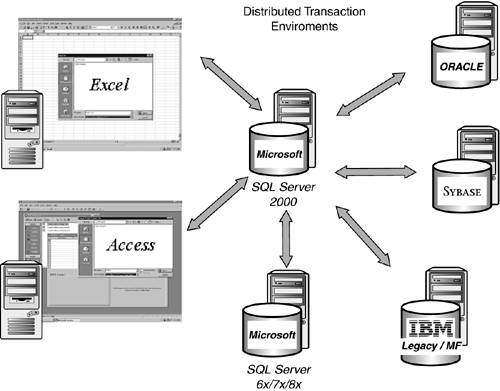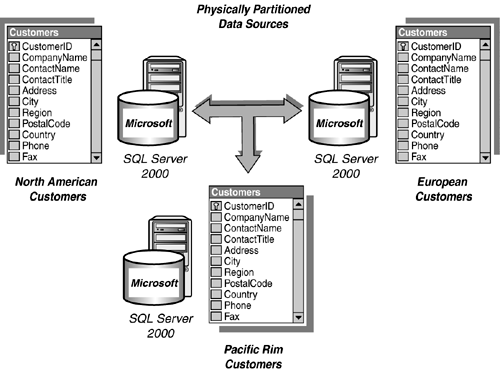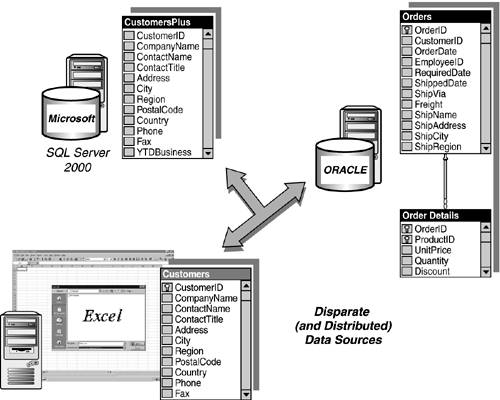Distributed Transaction Processing
| A distributed database (data) environment is a connected set of datasources that might or might not need to be accessed together. The Distributed Transaction Processing breadth is illustrated in Figure 32.1. Figure 32.1. Distributed Transaction Processing breadth. That distributed access could be read only (as with Distributed Queries) or contain updates (as with Distributed Transactions). You might have data distributed for a variety of reasons, some of which might include the following:
Regardless of the reasons of the distributed data or the types of access required against this data, the Microsoft SQL Server 2000 environment along with the Distributed Transaction Coordinator can readily address most of your needs. |
EAN: 2147483647
Pages: 503



